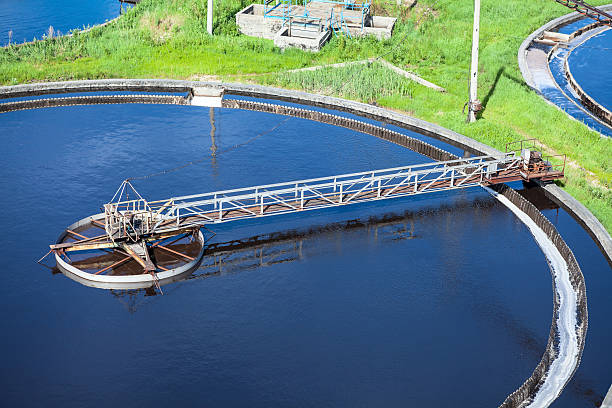Every drop of water that leaves an industry carries a story — and sometimes, it’s not a very clean one. As environmental concerns rise, industries are under immense pressure to treat wastewater responsibly. That’s where leading effluent treatment plant manufacturers come in, designing systems that transform contaminated water into reusable, eco-friendly resources.
Why Effluent Treatment Matters More Than Ever
Industrial wastewater, if discharged untreated, can severely harm ecosystems and human health. According to data from the U.S. Environmental Protection Agency (EPA), untreated effluents contribute to over 40% of water pollution globally. From textiles and pharmaceuticals to food processing and tanneries, every sector produces waste that needs careful management.
Effluent Treatment Plants (ETPs) act as the last line of defense before industrial waste reaches rivers, lakes, or soil. These systems not only reduce harmful contaminants but also help companies meet environmental regulations, save water costs, and enhance their green reputation.
The Role of an Effluent Treatment Plant Manufacturer
Manufacturers of ETPs do far more than assemble machinery. They engineer sustainable ecosystems. A professional manufacturer studies each industry’s waste composition, local laws, and environmental impact before designing customized solutions. Whether it’s a small-scale food unit or a large chemical factory, the design, process, and automation differ — and that’s where expertise shines.
Key Functions of a Reliable ETP Manufacturer
- Customization: Tailored systems for diverse waste types such as chemical, organic, or thermal effluents.
- Advanced Technology: Use of automation, IoT integration, and AI-based monitoring to enhance efficiency.
- Regulatory Compliance: Ensures treatment processes meet pollution control norms set by national boards.
- End-to-End Support: From design to installation and maintenance — a complete lifecycle partnership.
How an ETP Works: From Polluted to Pure
An Effluent Treatment Plant works through a series of stages that systematically remove impurities from industrial wastewater. The process generally includes:
- Preliminary Treatment: Screening and sedimentation remove large particles and solids.
- Primary Treatment: Chemical coagulation separates suspended matter from liquid waste.
- Secondary Treatment: Biological processes like aeration and activated sludge systems break down organic pollutants.
- Tertiary Treatment: Final polishing steps, including filtration, disinfection, and reverse osmosis, ensure water purity before discharge or reuse.
Modern effluent treatment systems are also integrating smart sensors for real-time monitoring — helping industries track pH, TDS, and BOD levels instantly. It’s efficiency and accountability combined.
Choosing the Right ETP Manufacturer
Not all manufacturers are created equal. When selecting an industrial partner, several factors can make or break your wastewater management goals:
- Experience: Look for companies with proven expertise across multiple industries.
- Technology Stack: Advanced filtration and automation options signal innovation.
- After-Sales Support: Maintenance contracts, regular audits, and spare parts availability are crucial.
- Sustainability Commitment: Choose a manufacturer that prioritizes energy-efficient designs and minimal sludge generation.
Reliable companies like Plizma Technology, known among the top industrial water treatment equipment suppliers in India, focus on cost-effective yet environmentally responsible solutions. Their designs align with modern sustainability goals — ensuring industries thrive without damaging the planet.
Environmental and Business Benefits of ETPs
Installing an ETP is not just an environmental decision — it’s a smart business move. Some notable advantages include:
- Compliance with pollution control board norms, avoiding hefty fines.
- Reduced water procurement costs through treated water reuse.
- Improved corporate image and eligibility for green certifications.
- Enhanced worker and community safety by minimizing contamination risks.
As the global focus shifts toward sustainability, ETP adoption is no longer optional — it’s imperative.
Frequently Asked Questions (FAQ)
1. What industries need effluent treatment plants?
Industries such as textiles, pharmaceuticals, food processing, leather, and chemicals are legally required to install ETPs due to their high wastewater output.
2. How often should an ETP be maintained?
Routine maintenance should be carried out monthly, with comprehensive inspections every six months to ensure optimal performance.
3. Can treated water be reused?
Yes. Properly treated effluent water can be safely reused for industrial cooling, irrigation, or even non-potable domestic uses.
4. What is the average lifespan of an ETP?
With good maintenance, an effluent treatment plant can operate efficiently for 10–15 years, depending on load and system design.
Final Thoughts
In a world where water scarcity and pollution are pressing challenges, choosing the right effluent treatment plant manufacturer is a commitment to a cleaner tomorrow. With advanced technology, sustainability focus, and expert craftsmanship, modern ETP manufacturers are helping industries turn waste into worth — one drop at a time.



